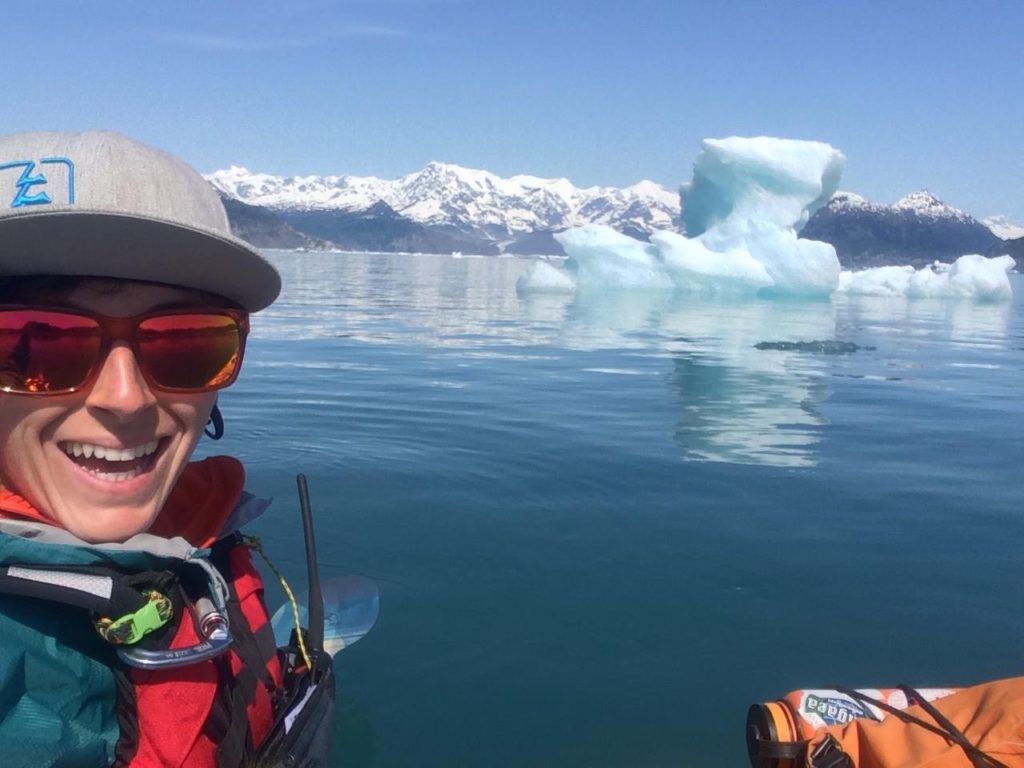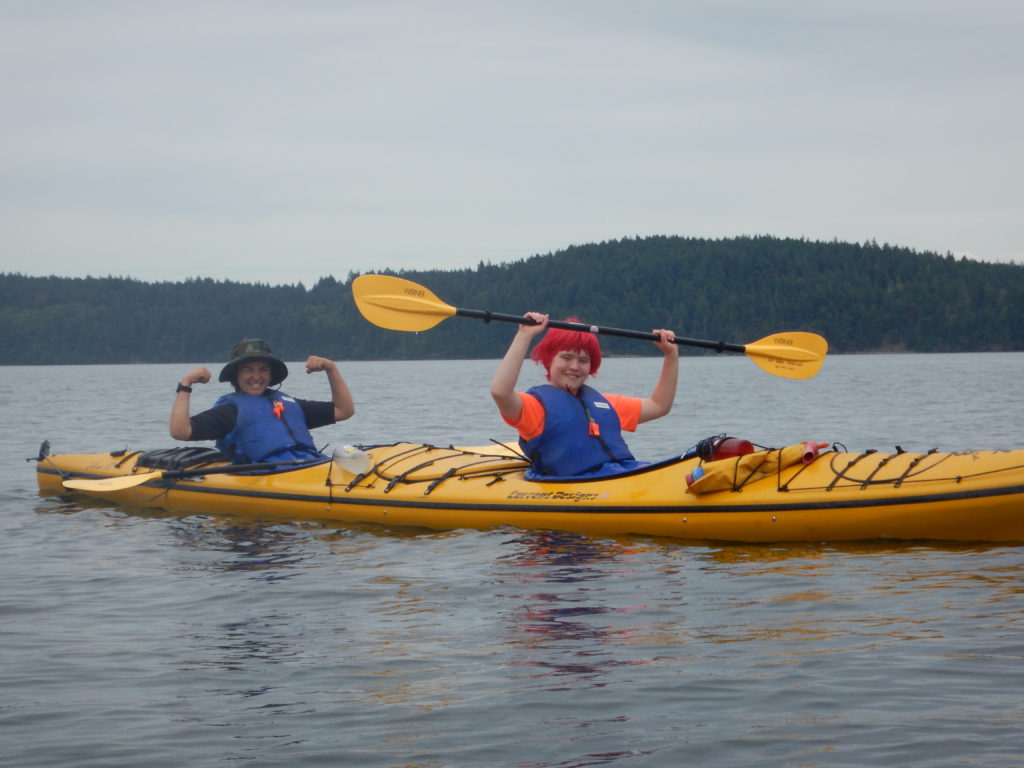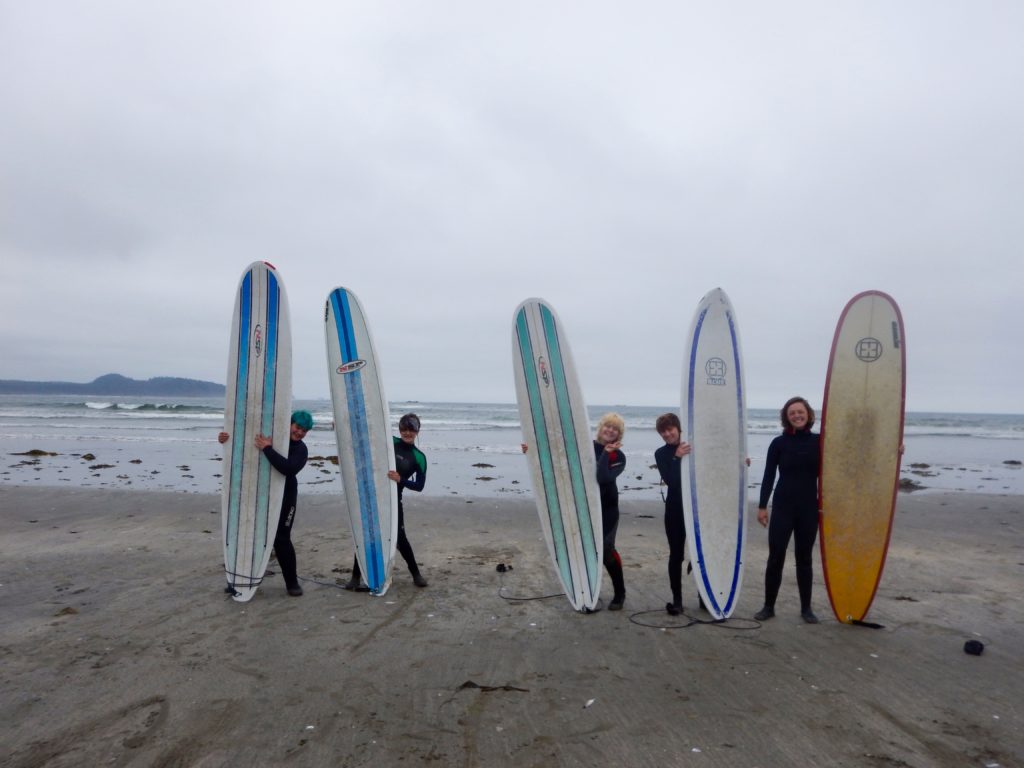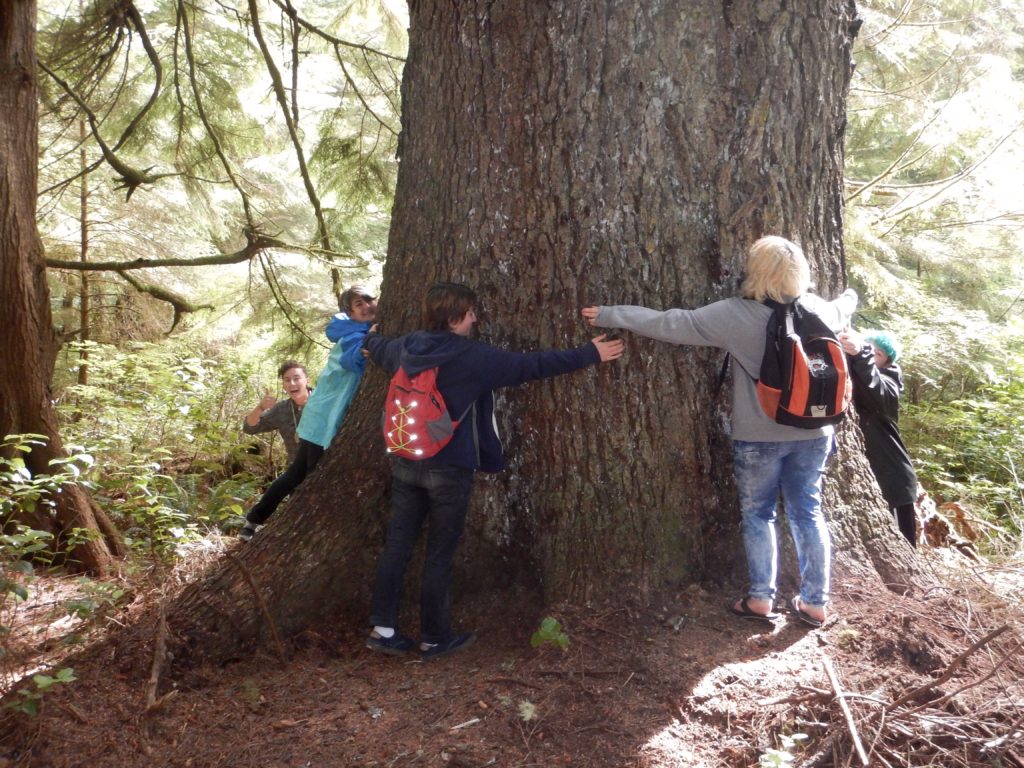As Elyse Rylander wrapped up her undergraduate education at the University of Wisconsin, she had a clear vision about the road ahead: she would channel her enthusiasm for the outdoors, personal understanding of its healing powers, and experiences as a member of the queer community to work with an organization that helped LGBTQ youth forge a positive connection with the natural world. When a clear path failed to materialize, however, she realized she’d have to carve one out herself.
With an abundance of determination coupled with what she calls “youthful enthusiasm,” Rylander committed to filling a gap in service with OUT There Adventures (OTA), a Seattle-based non-profit she launched in 2015 to offer LGBTQ youth the opportunity to experience the outdoors in a positive, supportive, and empowering space. Programming includes day trips, backpacking adventures, mentorships, and conservation corps experiences, all designed to offer supportive instruction, skills development, and community building. It’s also a way to show kids that they belong.
“As queer people we are told implicitly and explicitly over and over again that we are unnatural,’” says Rylander. “However, we see in nature myriad ways in which queerness is actually extremely natural. From the simple fact that one cannot travel in a straight line (for there are always twists and turns in the trail, stones and roots to step over, or the push and pull of the tides) to the immense diversity in which animals and plants shift their relational and reproductive roles, the natural world is the perfect place to see a queer identity reflected.” She says that this revelation is powerful for adults, but especially so for youth who are fighting through sometimes negative pressures and biases from society as they work toward their own self-discovery.
“To be able to connect with these amazing young people and know their struggles, and then watch them learn how to tie a bowline, to successfully complete a wet exit, to sit in our final expedition affirmation circle and share their appreciations for each other has created an unparalleled amount of joy for me,” says Rylander. “They are the most kind and caring group of people I have ever had the pleasure of spending time with. And they possess such amazing innate wisdom.”
Over the past year, Rylander’s work has moved beyond the confines of her organization. In October 2017, she partnered with Hannah Malvin, Recreation Policy Associate for the Wilderness Society and founder of Pride Outside, to launch the LGBTQ Outdoor Summit. The event was intended as “a space to interrogate the specific needs at the intersection of the LGBTQ community and the outdoors” and an opportunity to further dialogue about inclusion and diversity that became a groundswell across the outdoor industry last year; it was successful enough that a 2018 summit has just been announced. Rylander is also a member of the brand new Diversify Outdoors coalition, a collaboration of outdoor leaders who place the importance of equity front and center.
When you speak with her, you get the feeling that Rylander is just getting started – both with OTA and outside of the organization. “We have a number of exciting things planned in 2018, and my hope is this year will really help push our work forward across all facets of the industry,” she says. “Beyond 2018, I am very much looking forward to all of the ways in which the industry will be changing, because it will – and in big ways. There’s way too much amazing momentum pushing all of us forward. The tide continues to turn and we’re beyond ready to ride the wave.”
We had the opportunity to chat with Rylander about the experience of founding and growing OUT There Adventures, and her advice for working with LGBTQ youth.
Were there any particular resources you consulted or found useful when you began developing programming?
Through my time and connections in the industry I was able to build the initial organizational framework mirroring Outward Bound and Big City Mountaineers programs. As I put the paperwork together for the Form 1023 [an IRS form required to establish non-profit tax exemption status] I worked with the Entrepreneurial Law Clinic at the University of Washington, which was an immense help in navigating that bureaucratic process.
What were the biggest challenges you faced when launching OTA and throughout its first year?
Financial sustainability is the biggest issue facing any non-profit. It’s a business model that in many ways is designed to fail. This can foster creativity, as it has in many ways with OTA, but it can also put immense limitations on needed growth. In our first year, coming up with the funds to support our initial gear needs, scholarships, et cetera, was a huge hurdle. Outreach was also difficult for so many reasons. As we head in to our fourth programming season we’ve made progress on both fronts, but there is still a long way to go.
Was there an “Ah-ha!” moment when you realized that you were on the right path with OTA?
The last six or so years have been full of ups and downs; lots of “Ah-ha!” and “Oh, no!” moments. Somewhere floating around is a picture of me standing on Jones Island in the San Juans on our first ever OTA summer expedition in 2015. I’ve got both hands up in triumphant fists and the moment perfectly captures the feeling of, “Holy moly. We’re doing it!” Ever since, I’ve had so many wonderful moments that absolutely affirm that the work we’re doing is critical.
What role do partnerships or collaborations – whether with other organizations, government agencies, individuals, or brands – play in the work you do?
Authentic partnerships and mutually beneficial collaborations are what sustains us. In 2017, our biggest program partnership was with Northwest Youth Corps (NYC) (with support from The North Face) on the first-ever queer youth conservation corps. This year we are again partnering with NYC and also adding collaborative programs with the Northwest and California Outward Bound Schools. We’ve also worked with Seattle Parks and Recreation, King County Parks, and a number of LGBTQ youth groups around the Seattle Metro area. As we expand our program offerings into new cities across the country, partnerships and collaboration will continue to play a critical role in keeping our programs relevant and able to bridge gaps.
How has OTA changed since you first launched?
Oh my gosh, it’s changed so much! On the numbers side of things we started out with two LGBTQ youth on one trip the first year. In 2017, we worked with over 55 LGBTQ youth and their parents. In our only event thus far in 2018, we’ve already taken 30 LGBTQ adults out adventuring and we’re just getting started!
One of the benefits of being small and having such a supportive Board of Directors is that I am afforded a lot of creative freedom around how and why we do what we do. This allows things to evolve as they need every year and as a result we’ve been able to achieve so many wonderful things! As we look to expand in to the Bay Area and across the U.S., maintaining this flexibility will allow us to adapt our programs in whatever way is needed to remain as accessible and culturally relevant as possible.
What advice can you offer for others who work – or want to work – with LGBTQ youth?
If the queer community is not one you are a member of or have had much interaction with, then the first step is taking the time to educate yourself on our collective history, language, and culture. There are many nuances to our community across identities, locations, ages, and more, so this education will not be quick, nor easy. Additionally, get used to being wrong and making mistakes. We all do it, but you can easily make a tough situation way worse by lacking humility and not owning when you’ve messed something up.
You can also hire people or organizations, like myself and OTA, to come in and work with staff, board members, et cetera, and provide training and strategic planning on how to make your organization or company more equitable and thus inclusive for the queer community.
There’s a paradigm shift slowing moving along in the industry in which we are beginning to value social and emotional skill development as much as we value our technical skills. Just like when we bring in outside trainers and experts to make sure our staff have the right medical skills, climbing skills, paddling skills, or whatever, we need to do the same (and more) for social and emotional areas of expertise. We are moving beyond people being drawn to outdoor programs simply because it’s novel and exciting. People, especially young people, now want to spaces in which they don’t have to keep up their emotional armor. In order to provide those spaces we need to invest in training staff and changing our culture.
all images courtesy Elyse Rylander




